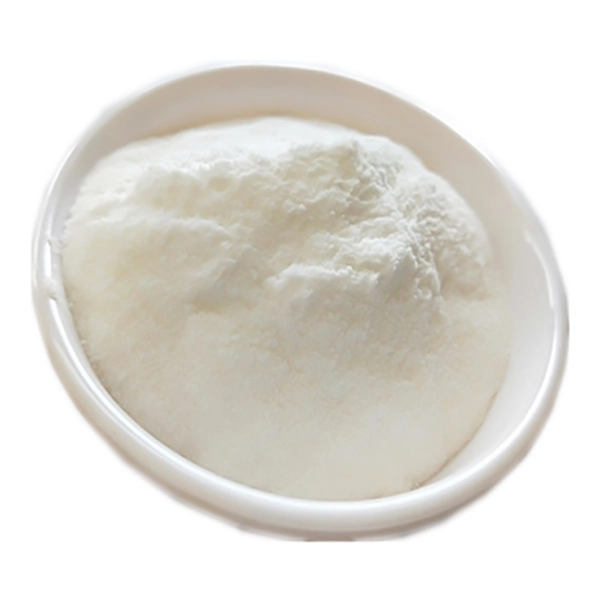+86-15212299029
- All
- Product Name
- Product Keyword
- Product Model
- Product Summary
- Product Description
- Multi Field Search
Views: 220 Author: tcchems Publish Time: 2025-11-13 Origin: Site











Content Menu
● Understanding Sodium Phosphate
● The Role of Sodium Phosphate in Baking
>> How Does Sodium Phosphate Function as a Leavening Agent?
>> Types of Sodium Phosphate Used in Baking
● Benefits of Using Sodium Phosphate in Baking
>> Improved Texture and Volume
● Safety and Regulatory Status
>> Related Questions and Answers
Sodium phosphate is a versatile compound that plays a significant role in various culinary applications, particularly in baking. This article explores the properties of sodium phosphate, its function as a leavening agent, and its implications in food science.

Sodium phosphate refers to a group of salts derived from phosphoric acid and sodium. It exists in several forms, including monosodium phosphate (MSP), disodium phosphate (DSP), and trisodium phosphate (TSP). Each variant has unique properties and applications, particularly in the food industry.
The chemical formula for sodium phosphate varies depending on its form:
- Monosodium Phosphate (MSP): NaH₂PO₄
- Disodium Phosphate (DSP): Na₂HPO₄
- Trisodium Phosphate (TSP): Na₃PO₄
These compounds are often used in food processing due to their ability to regulate pH, enhance texture, and act as emulsifiers.
Leavening agents are substances that cause dough or batter to rise by producing gas. This gas, typically carbon dioxide, expands during baking, creating a light and airy texture in baked goods. Common leavening agents include baking soda, baking powder, yeast, and certain acids.
Sodium phosphate can act as a leavening agent when combined with baking soda (sodium bicarbonate). The reaction between these two compounds produces carbon dioxide gas, which helps to leaven the dough. This reaction is particularly effective in recipes that require a quick rise, such as pancakes and muffins.
1. Acid-Base Reaction: When sodium phosphate is mixed with baking soda, an acid-base reaction occurs. The sodium phosphate provides the acidic component, while baking soda acts as the base.
2. Carbon Dioxide Production: The reaction produces carbon dioxide gas, which forms bubbles in the dough or batter, causing it to rise.
3. Texture Improvement: The presence of sodium phosphate not only aids in leavening but also improves the overall texture of the baked product, making it softer and more palatable.
Different forms of sodium phosphate can be used in baking, each contributing unique properties:
- Monosodium Phosphate (MSP): Often used in quick breads and pancakes for its rapid leavening action.
- Disodium Phosphate (DSP): Commonly found in processed cheese and baked goods, it helps maintain moisture and improve texture.
- Trisodium Phosphate (TSP): Used in various baked products, TSP acts as a buffering agent and helps control pH levels.
Sodium phosphate can extend the shelf life of baked goods by acting as a preservative. It helps inhibit microbial growth and maintains the freshness of products.
The leavening action of sodium phosphate contributes to a lighter texture and increased volume in baked goods. This is particularly important in products like cakes and muffins, where a fluffy texture is desired.
Sodium phosphate can be used in a variety of recipes, from cakes and cookies to pancakes and bread. Its ability to react quickly with baking soda makes it a valuable ingredient in quick-baking recipes.
Sodium phosphate is classified as Generally Recognized As Safe (GRAS) by the U.S. Food and Drug Administration (FDA). This designation indicates that it is safe for consumption when used in appropriate amounts. However, individuals with certain health conditions, such as kidney disease, should consult a healthcare professional before consuming products containing sodium phosphate.
Sodium phosphate is indeed a leavening agent, playing a crucial role in the baking industry. Its ability to produce carbon dioxide gas when combined with baking soda makes it an effective ingredient for creating light and fluffy baked goods. Additionally, its properties as a preservative and texture enhancer further solidify its importance in food science.

1. What are the different types of sodium phosphate?
- The main types include monosodium phosphate (MSP), disodium phosphate (DSP), and trisodium phosphate (TSP), each with unique applications in food and baking.
2. How does sodium phosphate improve the texture of baked goods?
- Sodium phosphate helps create a lighter texture by producing carbon dioxide gas during the leavening process, which expands the dough.
3. Is sodium phosphate safe to consume?
- Yes, sodium phosphate is classified as GRAS by the FDA, indicating it is safe for consumption in regulated amounts.
4. Can sodium phosphate be used in gluten-free baking?
- Yes, sodium phosphate can be used in gluten-free recipes to help improve texture and leavening.
5. What is the role of sodium phosphate in processed cheese?
- In processed cheese, sodium phosphate acts as an emulsifier, helping to blend oil and water, which improves texture and stability.
Hot Tags: China, Global, OEM, private label, manufacturers, factory, suppliers, manufacturing company



